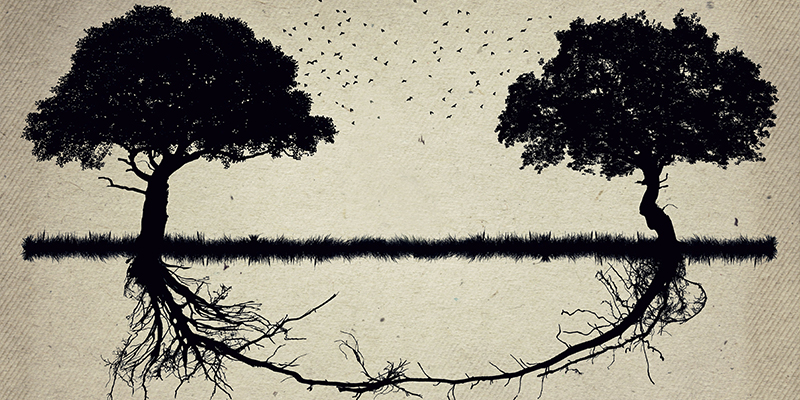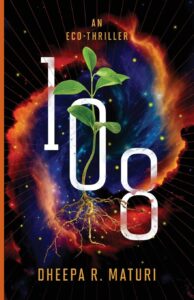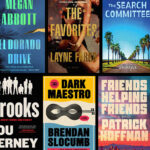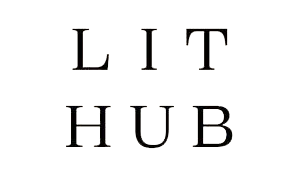Approaching an eco-thriller from the perspective of Eastern philosophy opened up this genre for me in surprising and useful ways. It allowed me to imbue atypical perspectives and insights into a climate thriller, brought energy and lightness to the heavy task of addressing an existential climate crisis, and provided a pathway to articulate an aspirational vision of communal power. I wanted to tell a climate story in which individual agency mattered and our communal action had a far-reaching impact.
As I began to write that story, it emerged as a climate thriller, with the accompanying thriller conventions: the ticking clock, the overwhelmingly powerful “bad guy” with a disregard for humanity, the global threat that would cause immense and irreparable harm.
While climate change and environmental destruction have concerned me my entire adult life, the arrival of my children predictably sharpened and focused that concern. The stakes felt more immediate, more palpable, as I witnessed their delight in the outdoors, as they pulled me into the backyard, then to city parks, then to state forests and national lakeshores. I knew their legacy was eroding, melting, spoiling by the second, and the ecological losses I learned about daily felt increasingly wrenching.
Bayla Jeevan, the protagonist of my debut novel 108: an Eco-Thriller, began to visit me long before I had a story to hold her. Her physical characteristics seemed clear to me—the shape of her face, the color of her eyes, her long dark curls—but her interiority was less so.
To get to know her better, I sketched her in words, writing her into disconnected scenes. As I did, her strength and endurance, along with her hesitancy, anxieties, and self-imposed loneliness filled in the physical outlines I’d already glimpsed. Particularly interesting was that, like me, Bayla carried a spiritual lineage, grounded in Eastern philosophy and practices.
She intrigued me, with her dedicated yoga and martial arts routines, her grace and agility, her ability to slip easily into a meditative state. Those qualities, combined with relatable faults, made her seem compelling and likeable.
At first glance, Bayla, this Indian-American practitioner of yoga and meditation, raised in an Eastern spiritual tradition, following its precepts and principles, seemed like an unlikely protagonist for an action-packed adventure. The more I thought about it, though, she was exactly the character to anchor the story.
I considered how she’d grown up in a forest school in southwestern India, near the Western Ghats mountain range with its stunning biodiversity, how she felt intimately connected to her physical surroundings, touching soil, climbing trees, looking under stones, feeling her relationship to the entire web of life. I thought about her daily meditation practice, which made her contemplate her place in the world and her responsibility for everything living and breathing around her.
Most of all, I considered the principles of Eastern philosophy she lived by and that I felt needed to be heard and considered in the context of the climate crisis. Through Bayla and the other characters, those philosophical threads entwined with 108‘s story, and I was fascinated as I watched the interweaving and unfolding:
- Earth is to be respected and honored. A daily ritual exemplifies Bayla’s relationship with Earth. Upon waking, and before stepping on the ground, she speaks a mantra expressing an apology to the planet, a gesture of reverence for the home that allows her to eat, drink, breathe, live.
- Turn inward for wisdom and strength. Tools in the form of yoga and meditation provide us a way to look inward, gain insight, and then reflect our found wisdom back to the larger world. Bayla’s training has shown her that pathway inward, but it’s still not easy for her to take it. When she begins to navigate her inner world more adeptly, though, she becomes more capable and effective in the outer world. She becomes a person who can face what seems insurmountable.
- Everything is interconnected. The Sanskrit phrase Vasudhaiva Kutumbakam means “All is One” and describes a unified field of consciousness that holds every bit of existence within it. Affecting one part of the field affects the entire collective, and per this principle, it is a fallacy to think we can act in isolation. In Bayla’s story, actions vis-à-vis the soil ignore life’s interconnectivity and disregard the domino effects that will impact the entire planet’s food chain and humanity’s ability to survive.
- Life operates cyclically. Life functions in overlapping and continuous cycles incorporating creation, maintenance, and destruction. If we wish to function in respectful interrelationship with the world and its existing principles—and if we wish to survive— our actions must understand, reflect, and honor those cycles.
- Actions have consequences. The principle of karma prompts us to scrutinize our actions and their effects on all other forms of life. It also brings awareness to the repetitions within our life journey—the variations of the same difficulties and traumas that occur until we learn the lessons required.
When I committed to a regular writing practice a decade ago, I began writing about culture and identity, but those topics were quickly interwoven with the ecological themes that resonated with me. Bridging Eastern and Western contexts and ideas made me think of the fertile place where our backgrounds, cultures, and ideas meet. I now wonder if that was Bayla’s lesson to me as she emerged from some place in our collective consciousness—to demonstrate how our interconnectedness can illuminate possibilities for a future with humanity and Earth in balance, at last.
At the same time, I became immersed in the writings of the classic environmentalists like Rachel Carson and Joanna Macy, the soulful ecologists like Suzanne Simard and Robin Wall Kimmerer, the clear-sighted activists like Rebecca Solnit and Vandana Shiva, as well as many others.
All of these writings, combined with my own practice, helped me to name what I was feeling: ecological grief, a term increasingly used in scientific literature and sometimes mainstream reporting. I felt a story growing within me, one that could not only express my grief, but also imagine more hopeful possibilities for the world, as Rebecca Solnit recommends we writers try to do. When I contemplated the heroine who would struggle against the odds, I saw someone in the background waving her hands, trying to get my attention.
It was Bayla Jeevan.
Excuse me, she said. This is my story.
***


















